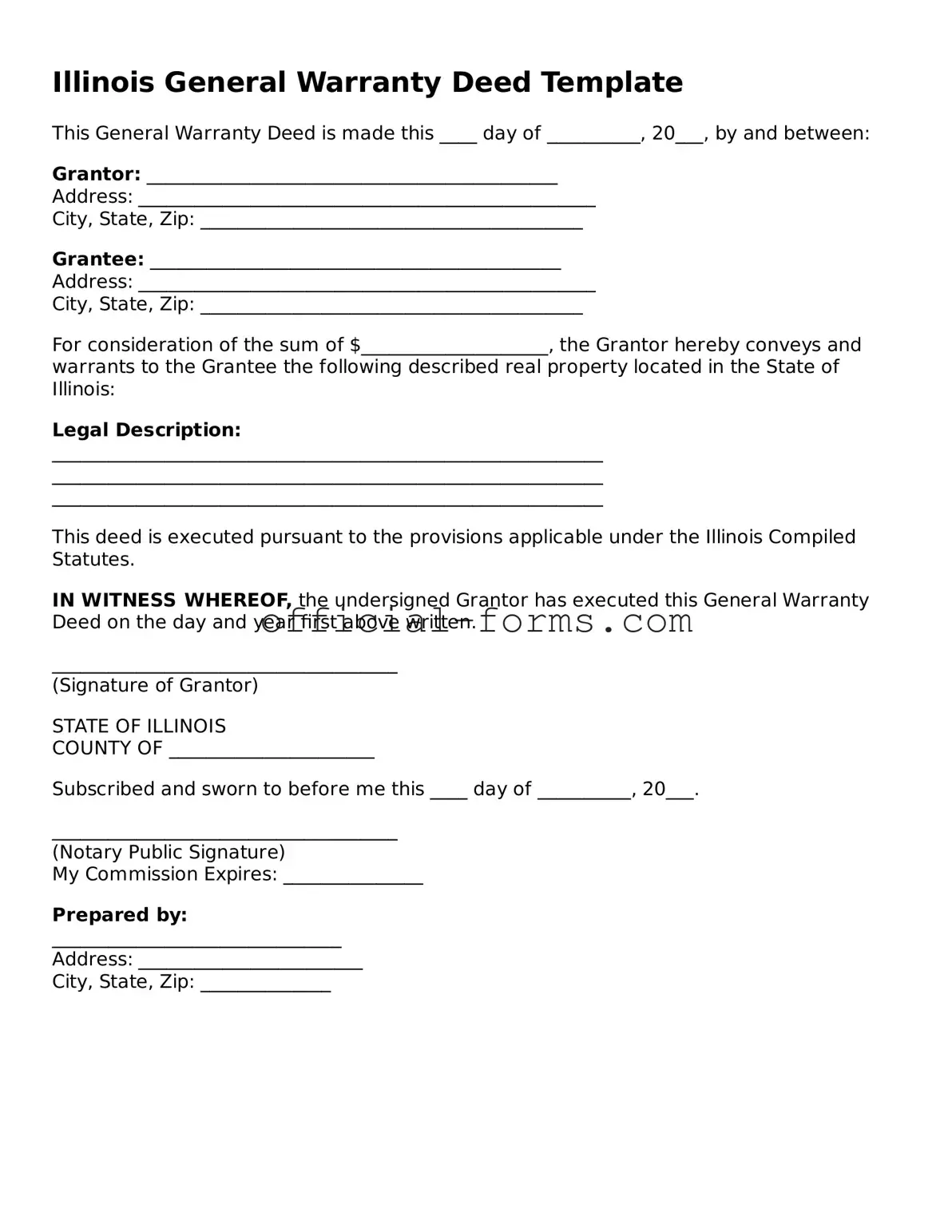The Illinois Deed form serves as a crucial document in the transfer of real estate ownership within the state. It outlines the specifics of the property being conveyed, including its legal description, which helps to clearly identify the land in question. This form is essential for ensuring that the transaction is legally binding and recognized by local authorities. The parties involved—typically the grantor, or seller, and the grantee, or buyer—must provide their names and addresses, establishing who is involved in the transfer. Additionally, the form may require the inclusion of a notary public's signature, which adds an extra layer of verification to the transaction. Various types of deeds exist, such as warranty deeds and quitclaim deeds, each serving different purposes and offering varying levels of protection to the buyer. Understanding the Illinois Deed form is vital for anyone looking to buy or sell property in the state, as it lays the groundwork for a smooth and legally sound transfer of ownership.
